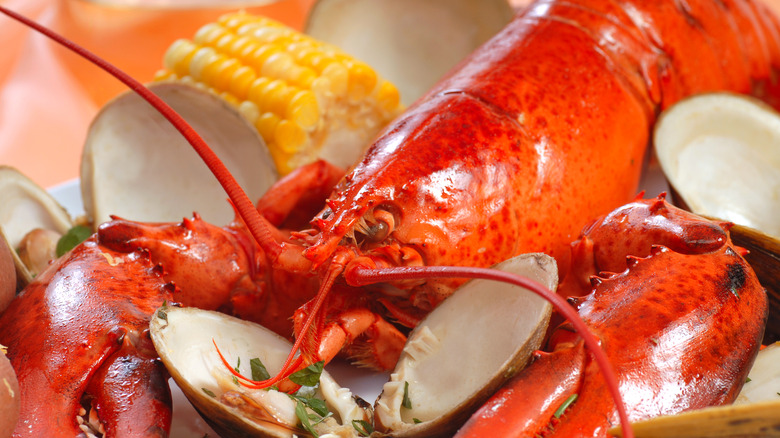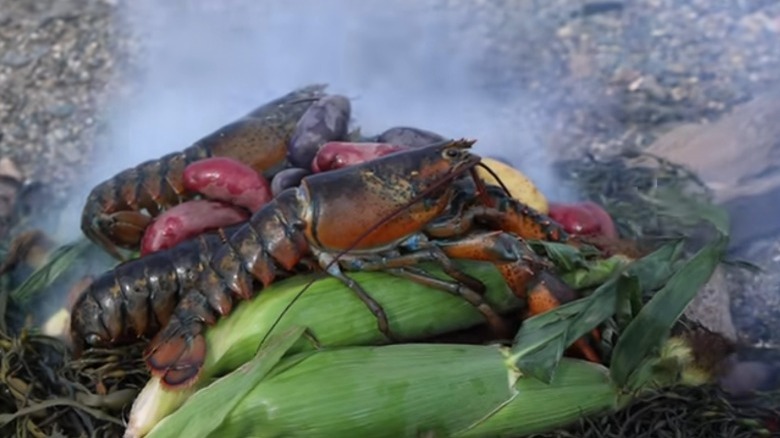Maine Lobster Bakes Are Rooted In Tribal Traditions
Many modern-day food traditions are less "modern" and more "traditional" than you may imagine. Just because grandma made it that way doesn't mean it originated in her kitchen. In fact, bits and pieces of her beloved recipe likely trickled down generation by generation, story by story, and hands to hands. When it comes to Coastal New England foods and lifestyles, the waterways themselves unlock the mysteries of deeply held regional customs — including the Maine lobster bake inspired by native communities.
In an Atlas Obscura post sponsored by the Maine Office of Tourism, indigenous writer Ann Pollard Ranco explains that the contemporary lobster bake has a living tradition with ancient indigenous roots. A current movement to "reclaim heritage foodways" shines new light on coastal tribal traditions. In this case, ones from the Wabanaki and Penobscot peoples of Maine. The Maine State Museum notes that the Penobscot, along with Maliseet, Micmac, Passamaquoddy, and Abenaki tribes, collectively exist today under the Wabanaki name.
Here's a look at how tribal traditions gave rise to today's Maine lobster bakes and how they remain intrinsically tied to the natural elements of earth, water, wind, and fire.
Slow, deep, and natural lobster bakes
Lobster bakes today still occur on a beach, but often include enormous metal cooking pots. Get Maine Lobster points out that Native American tribes 2000 years ago didn't have access to such pots, instead utilizing the sand and natural elements to cook lobsters and clams. Surviving shell mounds give testament to this practice, according to archaeologist Chris Sockalexis, a historic preservation officer for the Penobscot Nation. He explains to Ranco, per Atlas Obscura, that today's popular shellfish feasts hold very similar characteristics to ancient indigenous coastal ones, likely observed by European settlers.
Ranco gathered a group of current Penobscot/Wabanaki tribal members, including herself, to recreate a genuine traditional lobster bake on ancestral lands. This process included spreading dozens of rocks over the sand pit, building a wood fire on top, and letting the wood turn slowly into coals. They spread a Maine seaweed known for salty pockets of seawater over the hot rocks and raked coals, which steamed the lobsters and accompanying shellfish sitting on top. The entire sizzling feast then received another layer of seaweed, gallons of seawater, wet burlap, and a final wet blanket covering the entire mound. As the earth, fire, and water, slowly baked the shellfish for about 1.5 hours, the young, windswept Wabanaki descendants re-lived and reconnected to ancestral traditions and foodways.
The Hartford Courant notes that some indigenous New England tribes still carry out the clam- and lobster-bake traditions, while non-natives celebrate seasons and occasions with adapted versions.

